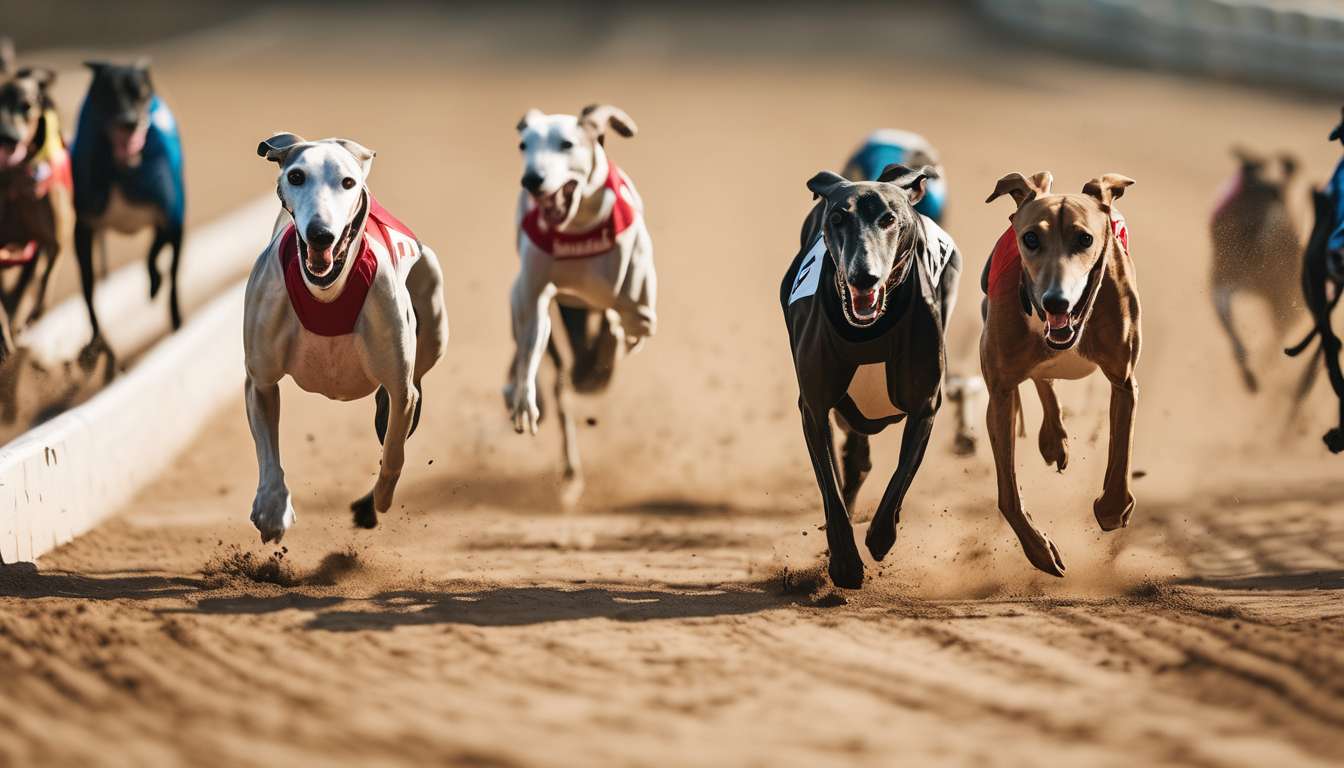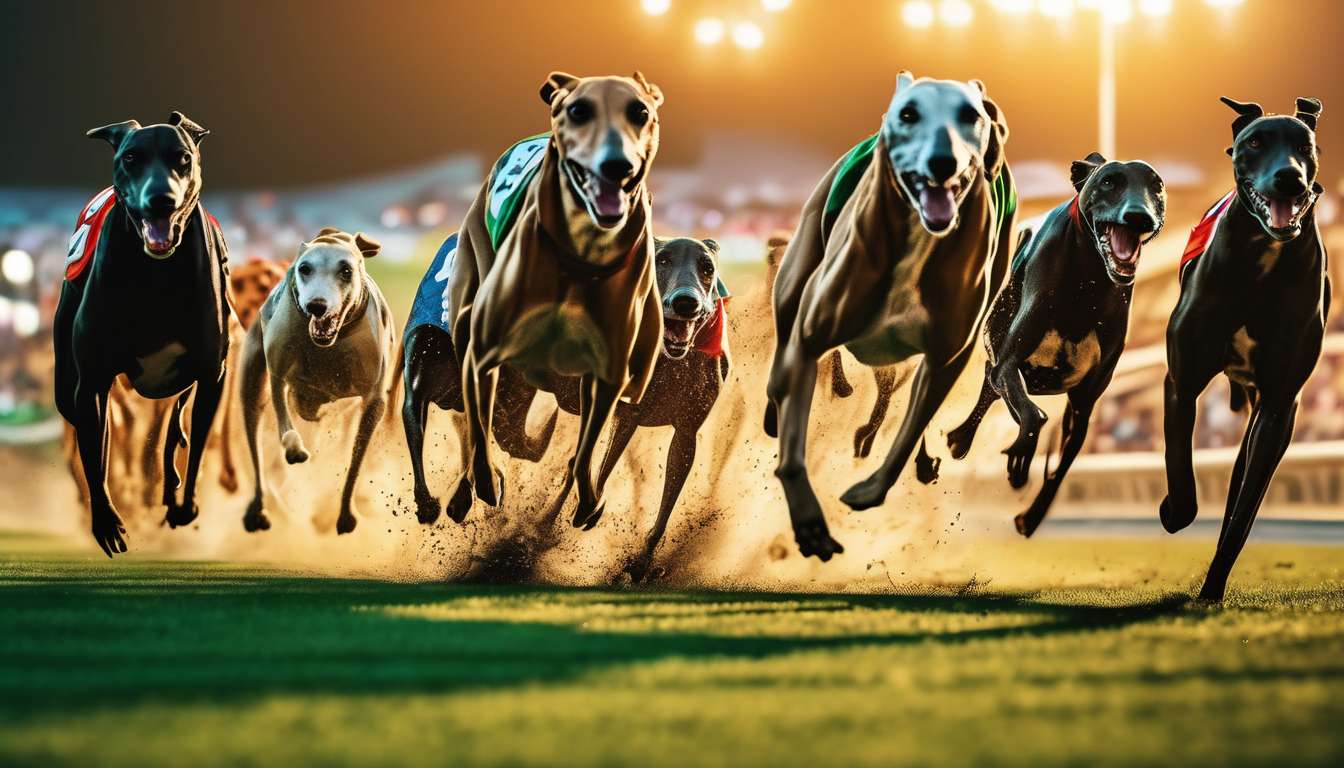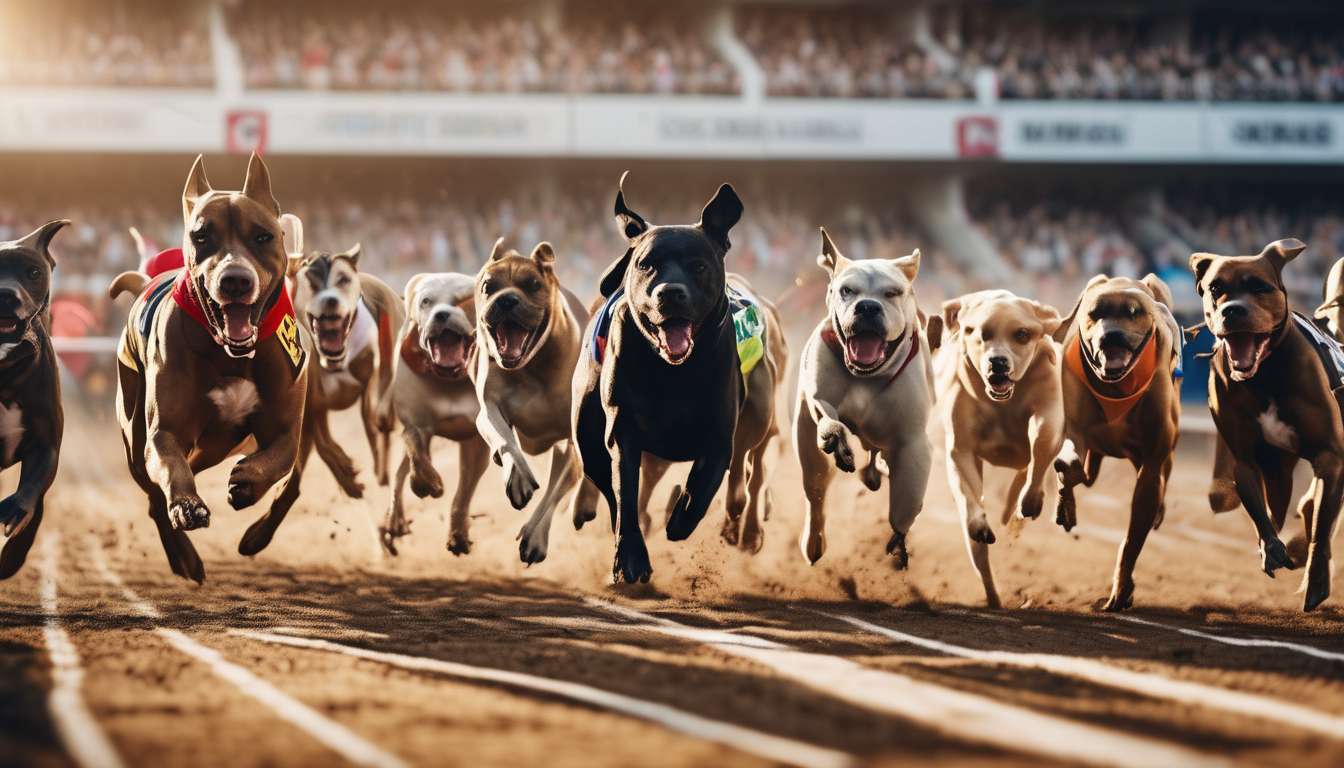In the exhilarating world of dog racing, we often find ourselves searching for that edge, that small advantage that can tip the scales in our favor. As avid enthusiasts and seasoned bettors, we understand the importance of strategy and insight.
That’s why we’ve turned our attention to track bias, an often overlooked but crucial element in the betting landscape. Track bias refers to the unique characteristics of a racing track that can influence the performance of the dogs. By understanding these nuances, we can develop informed betting strategies.
In this article, we will delve into eight specific strategies that leverage track bias to enhance our betting outcomes. By examining:
- Historical data
- Track conditions
- Intricacies of dog performance
We aim to equip ourselves with the knowledge needed to make smarter bets.
Join us as we explore these strategies and unlock new opportunities in the thrilling arena of dog racing.
Utilizing Historical Track Data
Analyzing historical track data allows us to identify patterns and make informed betting decisions. By diving into past performances, we uncover track bias tendencies that could be pivotal in shaping our betting strategies.
Track bias is the tendency of certain tracks to favor specific running styles or positions. This becomes evident when we delve into the numbers. Historical data equips us with the knowledge to spot these biases, helping us predict outcomes more accurately.
As a community of strategists, we’re not just spectators; we leverage data to find our edge. By recognizing track bias, we’re united in our quest for smarter bets.
- Sharing Insights: We gather around this wealth of information, share insights, and refine our methods.
- Crafting Strategies: Betting strategies aren’t just about luck—they’re crafted through our collective understanding of the game.
- Building Connections: Together, we navigate the data, feeling that sense of belonging as we connect with others who share our passion for intelligent wagering.
Let’s continue this journey, informed and empowered by history.
Analyzing Weather Impact on Bias
Weather conditions can significantly alter track dynamics, and we must consider these changes when analyzing potential biases.
As fellow enthusiasts of the thrilling world of dog betting, we know how crucial understanding track bias is to our betting strategies.
- Rain can soften the track, potentially favoring different dogs than it would in dry conditions.
- Similarly, wind direction and intensity might impact the race’s outcome by affecting dogs differently based on their running style.
To enhance our betting strategies, we should:
- Dive into historical data to see how weather has influenced past races.
- Identify patterns and adjust our strategies accordingly. For instance:
- Determine if a particular track becomes slower when wet.
- Discover if certain dogs perform better under windy conditions.
By sharing our insights and observations, we create a community where we all benefit. Together, let’s harness the power of weather analysis to refine our strategies and increase our chances of success.
We belong to a group that values understanding and adapting to all variables.
Identifying Speed-Favoring Tracks
Understanding Track Bias for Betting Success
Many tracks are known for favoring speed, and understanding these nuances can significantly enhance our betting success. When we dive into the world of track bias, we find that some tracks consistently show a preference for speed. This means that dogs with a quick start and the ability to maintain their pace often have an advantage.
Identifying Speed-Favoring Tracks
To pinpoint these tracks, we need to analyze historical data meticulously. We look for patterns where front-running dogs consistently outperform their competitors.
- This data becomes a trusted ally.
- It guides us to make informed decisions.
- It creates a community of savvy bettors who share insights and strategies.
Community and Strategy
Let’s embrace the camaraderie of fellow bettors as we explore and share our findings. By focusing on speed-favoring tracks, we align ourselves with a strategy that:
- Enhances our chances of betting success.
- Fosters a deeper connection within our group.
By doing so, we not only improve our individual betting outcomes but also strengthen the collaborative spirit among us.
Capitalizing on Inside Bias
Many bettors overlook the advantage that inside lanes can provide, but recognizing and capitalizing on this inside bias can significantly boost our wagering success. By focusing on track bias, we can develop betting strategies that enhance our odds.
Tracks often display a tendency where dogs running on inside lanes have a distinct edge, especially if the historical data supports it. It’s our job to dig into this data, spotting patterns where inside lanes consistently outperform.
To belong to the group of successful bettors, we need to be astute observers. Here are steps to enhance our betting success:
- Analyze past races, noting how often inside lanes win or place.
- Use this insight to make informed wagers.
By sharing our findings with fellow bettors, we foster a community that thrives on shared knowledge and insights. Together, we can:
- Discuss which tracks favor inside bias.
- Adjust our strategies accordingly.
Let’s leverage our collective wisdom to navigate the track bias and enhance our betting success.
Exploiting Outside Lane Advantage
While many focus on the inside lanes, there’s often untapped potential in exploiting the advantages of the outside lanes. Together, we can uncover these opportunities by understanding track bias and its impact on greyhound performance.
Historical data reveals that certain tracks favor dogs starting from the outside lanes, offering them an edge over their competitors. This insight is essential for developing effective betting strategies that capitalize on these biases.
To harness these insights, we should:
- Examine past race results.
- Identify patterns.
- Anticipate which dogs might thrive in these conditions.
We feel a sense of camaraderie when sharing insights that lead to successful bets, strengthening our collective confidence. It’s not just about isolating those standout runners but also about understanding the dynamics of each race.
Let’s embrace the challenge and delve into historical data to refine our strategies. By focusing on outside lane advantages, we’ll forge a path that enhances our betting acumen and nurtures a deeper connection with our betting community.
Adjusting Bets for Wet Tracks
When the rain starts pouring, we need to adjust our bets to account for how wet tracks can drastically alter a greyhound’s performance. Our community of bettors understands that track bias shifts significantly with weather changes, and embracing this knowledge strengthens our betting strategies.
Key Strategies:
-
Leverage Historical Data:
- Identify which greyhounds excel in damp conditions.
- Recognize that some dogs adapt better to slippery surfaces, while others might struggle.
-
Analyze Track Patterns:
- Some tracks consistently favor inside lanes during wet weather.
- Other tracks may see outside lanes gaining an unexpected advantage.
By scrutinizing these trends, we can tailor our bets to align with the current track bias. It’s about sharing insights and learning from one another to make informed decisions.
Importance of Community Communication:
- Share observations and data within the community.
- Ensure everyone is equipped to place smarter bets.
- Enhance our collective success on those rainy days.
By collaborating and communicating effectively, we can improve our betting strategies and outcomes despite the challenges presented by wet weather conditions.
Leveraging Wind Influence on Bias
Wind Impact on Greyhound Performance
Wind can dramatically impact a greyhound’s performance, and understanding this influence helps us refine our betting approach. Track conditions can shift with the weather, and wind is a factor that often gets overlooked.
By analyzing historical data of races conducted under varying wind conditions, we can uncover patterns that highlight track bias. For instance:
- A strong headwind might slow down the leaders.
- A tailwind could benefit those chasing from behind.
Incorporating Wind Conditions into Betting Strategies
To leverage this insight, we should incorporate wind conditions into our betting strategies. Here’s how:
- Identify tracks that consistently show a bias when wind speeds reach certain thresholds.
- Determine which greyhounds excel or falter under specific wind influences.
Collaborative Approach for Improved Understanding
By collaborating and sharing insights within our community, we can refine our understanding and improve our chances of success. Together, we can harness the power of wind influence, turning what seems like chaos into a strategic advantage.
Incorporating Track Bias into Betting Models
We need to systematically integrate track bias into our betting models to enhance predictive accuracy and optimize our wagers. By doing so, we’re joining a community of savvy bettors who understand that success comes from more than luck; it’s about smart strategies rooted in data.
Let’s dive into how we can achieve this together.
1. Gather Historical Data:
- Collect data on different tracks to identify patterns in track bias.
- Look for factors such as lanes or conditions that favor certain dogs.
- Use this analysis to refine our betting strategies.
2. Incorporate Analysis into Models:
- Integrate the identified patterns from the data into our betting models.
- This helps us predict outcomes with greater confidence.
3. Continuously Update Models:
- Regularly update our models with fresh data to ensure they remain relevant and effective.
- Adapt and evolve our methods, emphasizing our role not just as bettors, but as analysts.
By following these steps, we foster a sense of belonging within a community dedicated to mastering the art of betting. Together, we’re building a smarter, more successful approach.
What is track bias and how is it determined in dog racing?
Track bias in dog racing refers to the tendency of a particular part of the track to favor certain dogs over others.
It can be determined by observing patterns in how dogs perform in different lanes or sections of the track. Factors influencing track bias include:
- Track conditions
- Weather
- Maintenance
By understanding track bias, we can make more informed betting decisions based on which dogs are likely to benefit from favorable track conditions. This knowledge allows bettors to strategically place bets with a higher probability of success.
How can I find reputable sources for track bias information?
We usually rely on reputable sources for track bias info.
-
Official Racing Websites:
- These sites often list track conditions and provide official updates.
-
Social Media Groups and Forums:
- These platforms can offer valuable insights from experienced bettors, sharing real-time information and personal experiences.
-
Handicapping Services:
- Some services specialize in providing detailed track bias analysis, which can be a critical component in betting strategies.
Gathering Data:
We aim to collect information from multiple sources to make well-informed decisions.
Trusting Reliable Sources:
Relying on accurate and trustworthy information is crucial in our pursuit of successful betting strategies.
Are there any legal restrictions or regulations on dog betting in different regions?
Yes, there are legal restrictions and regulations on dog betting that vary by region. It’s important to understand the laws governing this activity in your area to ensure compliance.
Steps to Ensure Compliance:
-
Research Local Gambling Regulations:
- Investigate the specific laws and regulations that apply to dog betting in your region.
- Stay informed about any restrictions related to dog betting.
-
Make Responsible Decisions:
- Ensure that all your activities are within the legal framework.
- Prioritize legality by adhering to the rules set forth by authorities.
By taking these steps, we can engage in dog betting responsibly and legally.
Conclusion
As you navigate the exciting world of dog betting, remember to keep track bias in mind.
By utilizing historical data, analyzing weather conditions, and identifying track tendencies, you can enhance your betting strategies.
Whether you’re:
- Capitalizing on inside bias
- Leveraging outside lane advantages
Incorporating these factors into your bets can give you an edge.
Stay informed, adapt your approach, and watch your success grow as you factor in track bias to make more informed bets.
Happy betting!




